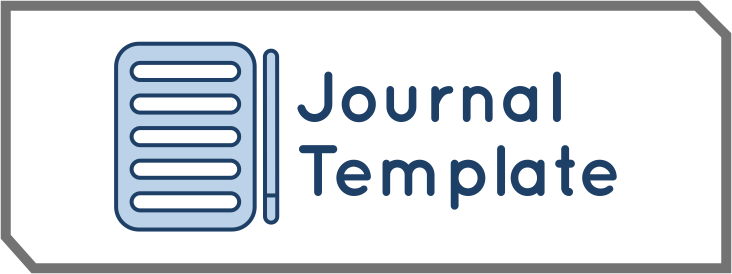Development of Electronic Teaching Materials with Rahmatan Lil Alamiin Value of Taaddub and Tathawwur Wa Ibtikar Theme of Digital Economic Development for Grade IX Madrasah Tsanawiyah Negeri 9 Bantul
DOI:
https://doi.org/10.55606/ijemr.v3i3.406Keywords:
Critical, Digital, ElectronicAbstract
Most of the materials and questions in the available printed package books are still at the low order thinking skill (LOTS) level so that they cannot foster critical thinking skills in students in accordance with the 21st century learning characteristics. This causes the number of students who are predicated on completion when the teacher presents high order thinking skill (HOTS) questions in formative assessments is also still low, which is around 8.9%. This research and development uses the ADDIE model. This type of research is a quasi-experimental non-equivalent control group design consisting of experimental and control classes. Both groups were given an initial test then given different treatments and ended with a final test for each group. The feasibility of the product was assessed by media and material experts, as well as teachers as practitioners. Electronic teaching materials were tested on the research subjects, namely students of class IXE MTsN 9 Bantul. The data collection instruments used were interviews, expert validation questionnaires, teacher response questionnaires, student response questionnaires, and questions on the theme of digital economic development. The results of this study are as follows. 1) The development process is carried out by analyzing and observing related students, designing products, developing electronic teaching materials, conducting expert validation, implementing in class IXE and evaluating by revising based on validator suggestions. 2) The electronic teaching materials produced meet the eligibility criteria based on the validation results of material experts 3.21, media experts 3.92, and teacher practitioners 3.58. 3) Learners gave a practicality rating of 3.21. 4) The electronic teaching materials produced are effective for improving critical thinking skills with a gain of 0.71.
References
Aziz, A., Aziz, A., et al. (2017). Pengembangan bahan ajar IPS model shared kelas VIII. Jurnal Studi Sosial, 5(3). https://www.neliti.com/publications/140188/pengembangan-bahan-ajar-ips-model-shared-kelas-viii#cite
Cahyono, B. (2017). Analisis keterampilan berfikir kritis dalam memecahkan masalah ditinjau perbedaan gender. Aksioma, 8(1), 50. https://doi.org/10.26877/aks.v8i1.1510
Chukwuywnum, A. N. (2013). Impact of critical thinking on performance in mathematics among senior secondary school students in Logos State. Journal of Research and Method in Education, 3(5), 18–25. https://www.iosrjournals.org/iosr-jrme/papers/Vol-3%20Issue-5/D0351825.pdf
Dick, W., & Carey, J. O. (2001). The systematic design of instruction (5th ed.). Longman.
Djoko, Suwarno, dkk. (2018). PerZpective. Universitas Katolik Soegijapranata. https://repository.unika.ac.id/21622/
Febrianti, N. S., Utomo, A. P., & Supeno, S. (2021). Kemampuan berpikir kritis siswa SMP dalam pembelajaran IPA menggunakan media aplikasi Android getaran dan gelombang. Optika: Jurnal Pendidikan Fisika, 5(1), 26–33. https://doi.org/10.37478/optika.v5i1.936
Hake, R. R. (2012). Analyzing change/gain scores. http://www.physics.indiana.edu/~sdi/AnalyzingChange-Gain.pdf
I Dewa Gede, et al. (2014). Pengembangan bahan ajar IPS berorientasi IPS terpadu untuk peserta didik SMP kelas VII. e-Journal Program Pascasarjana Universitas Pendidikan Ganesha Program Studi Teknologi Pembelajaran, 4. https://ejournal-pasca.undiksha.ac.id/index.php/jurnal_tp/article/view/1084
Jamilah, J., Najib, A. A., Dzulkhairi, M., Ariff, H., & Ismail, N. N. (2014). Integration of Islamic input in medical curriculum – Universiti Sains Islam Malaysia (USIM) experience. The International Medical Journal of Malaysia, 13(2), 73–77. https://journals.iium.edu.my/kom/index.php/imjm/article/view/483
Junoh, N., & Mohamad, A. M. (2020). Pemikiran kreatif Islam: Analisis terhadap istilah-istilah berkaitan dalam Al-Quran. Journal of Muwafaqat, 3(1), 130–149.
Kementerian Pendidikan dan Kebudayaan. (2019). Hasil PISA Indonesia 2018: Akses makin meluas, saatnya tingkatkan kualitas. https://www.kemdikbud.go.id/main/blog/2019/12/hasil-pisa-indonesia-2018-akses-makin-meluas-saatnya-tingkatkan-kualitas
Kementerian Pendidikan dan Kebudayaan. (2022). Pembelajaran abad 21. Cerdas Berkarakter Kemdikbud. https://cerdasberkarakter.kemdikbud.go.id/sahabatkarakter/kegiatan/93212a18-7b1e-4f4e-9919-51129308a785.pdf
Kementerian Pendidikan, Kebudayaan, Riset, dan Teknologi. (2022). Kemendikbudristek dorong PTM 100% pada tahun ajaran 2022–2023. Ditpsd Kemdikbud. https://ditpsd.kemdikbud.go.id/artikel/detail/kemendikbudristek-dorong-ptm-100-pada-tahun-ajaran-2022-2023
Muflianah, E. (2022). Implementation of the ADDIE model learning strategy in life skills education Packet C (National High School Equivalency Examination) at SPNF and SKB in Tegal Regency. Review of Multidisciplinary Education, Culture and Pedagogy, 2(1), 33–41. https://ojs.transpublika.com/index.php/ROMEO/
PSKP Kemdikbud. (2022). Untuk atasi krisis pembelajaran Mendikbud luncurkan Kurikulum Merdeka. https://pskp.kemdikbud.go.id/berita/detail/313036/untuk-atasi-krisis-pembelajaran-mendikbud-luncurkan-kurikulum-merdeka
Pusat Informasi Guru Kemdikbud. (2023). Latar belakang Kurikulum Merdeka. https://pusatinformasi.guru.kemdikbud.go.id/hc/en-us/articles/6824331505561-Latar-Belakang-Kurikulum-Merdeka
Rahmatullah, M. I. (2019). Development of e-learning media-based digital literacy learning concepts in PJOK subjects in Yogyakarta City high schools. Journal of Sport Education, 1(2), 56. https://doi.org/10.31258/jope.1.2.56-65
Smaldino, S. E., Lowther, D. L., Mims, C., & Russell, J. D. (2019). Instructional technology and media for learning (12th ed.). Pearson Education.
Susilowati, S. (2017). Pengembangan bahan ajar IPA terintegrasi nilai Islam untuk meningkatkan sikap dan prestasi belajar IPA siswa. Jurnal Inovasi Pendidikan IPA, 3(1), 78–88. https://doi.org/10.21831/jipi.v3i1.13677
Yuliana, E., Subagiyo, L., & Zulkarnaen. (2020). Pembelajaran fisika berbasis Android dengan program Adobe Flash CS 6 untuk meningkatkan kemampuan berpikir kritis dan hasil belajar siswa SMA IT Granada Samarinda. Jurnal Literasi Pendidikan Fisika (JLPF), 1(2), 105–114. https://doi.org/10.30872/jlpf.v1i02.191
Downloads
Published
How to Cite
Issue
Section
License
Copyright (c) 2024 International Journal of Economics and Management Research

This work is licensed under a Creative Commons Attribution-ShareAlike 4.0 International License.







